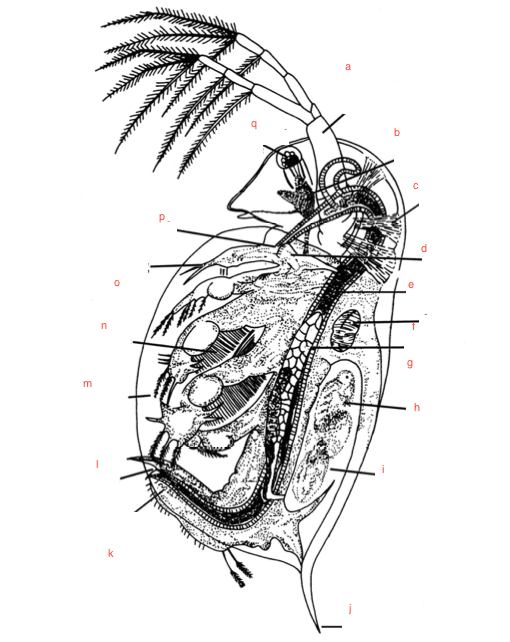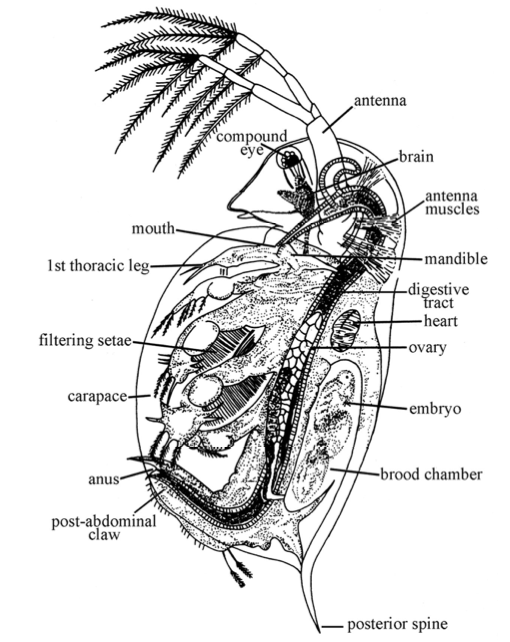Cards In This Set
| Front | Back |
|
What are Cladocerans?
|
Aquatic crustaceans "water fleas"Important in food web because they prey on phytoplankton/bacteria and are eaten by other invertebrates like Hydra and vertebrates like fish.Ex. Daphnia magna
|
 Daphnia magna |
 Brood pouch - contains 2-20 eggs which usually develop by parthenogenesis.posterior spine - reduce chance of being eaten by small predatorspost abdominal claw - removes debris from under carapaceThoracic legs - 5 pairs which generate water currents + filter feeding. Food gets trapped on filtering setae |
|
Parthenogenesis
|
Asexual!During favourable conditions only females are produced. During unfavourable conditions some eggs develop into males. Then there is sexual reproduction. Then, females (before death) make thick protective layer around the brood chamber w/ 2 fertilized eggs. The sac is molted and remains in the sediment until conditions improve.
|
|
Ectothermic vs. Endothermic?Which one is Daphnia?
|
Ectothermic - heat comes from external sources (Daphnia)Endothermic - Heat is internal (from metabolism) ex. Birds/mammals
|
|
Homeothermic vs poikilothermsWhich is daphnia?
|
Homeotherms can thermoregulate (maintain body at decent temperature)Poikilotherms - Can't thermoregulate. Changes w/ the environment.
|
|
How do you calculate Q10 and what is it?
|
 Q10 shows the sensitivity of a reaction to temperature.Calculate by dividing rate of a reaction at one temperature (Rt) by the rate of the reaction at a temperature 10 degrees lower (Rt-10)Ex. if temperature doesn't affect rate of reaction the Q10 will be one.If rate of reaction doubles w/ 10 degrees increase, the Q10 will be 2. |
|
How do you get a bimodal distribution of beak sizes?
|
Tell me about it.
|
|
What's PC1?
|
Beak size which is a composite of length, width, and depth.
|



